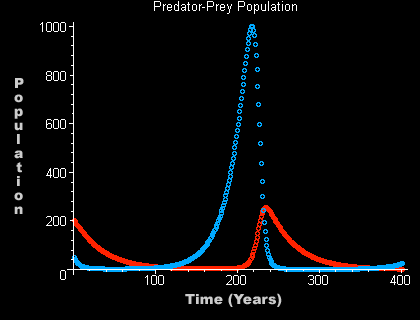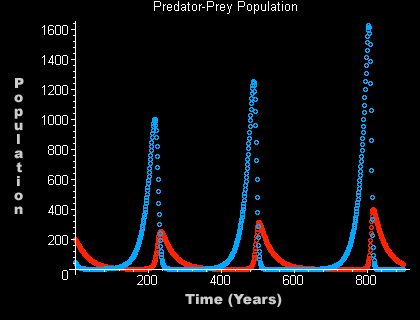|
|
||
Predator-Prey Population graphs Cont'd.
Reproduce slow, start higher.This graph spans 400 years, has an initial prey population
|
|
|
This graph spans 900 years, has an initial prey
population of 50 and an initial predator population of 200.
P1 = 50 Q1 =
200 n = 900
Further into the future was viewed. If this model was possible, it would repeat and rise. It is interesting to see that there are patterns to population model if the variables repeat, but at the same time, the pattern is more complex than mere repetition. As mentioned, the population also maximum increases with each cycle.
|
|




